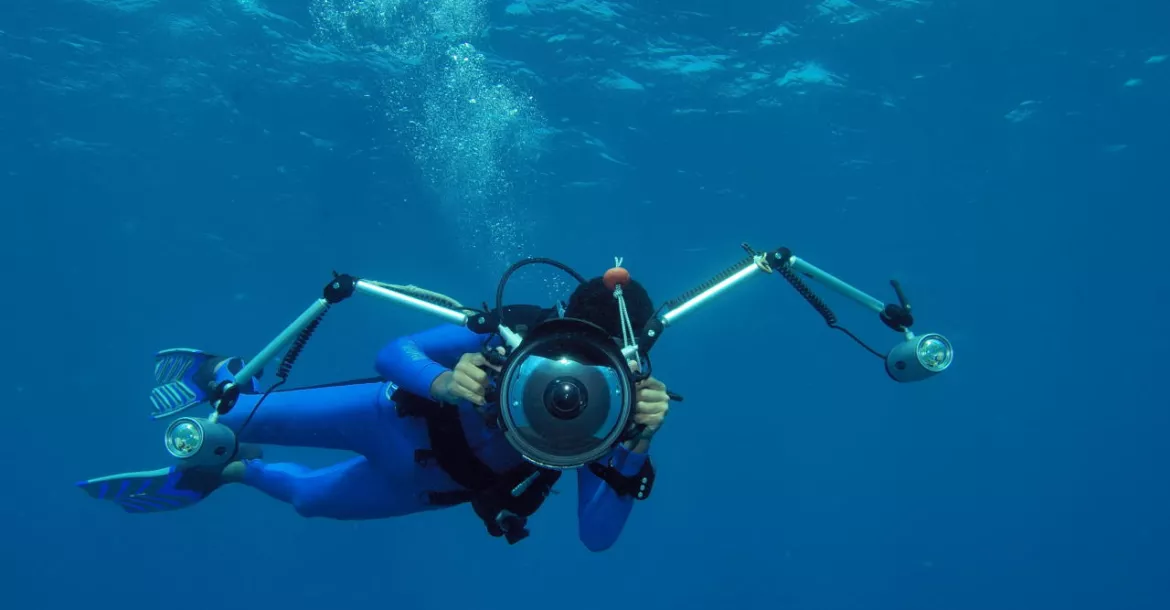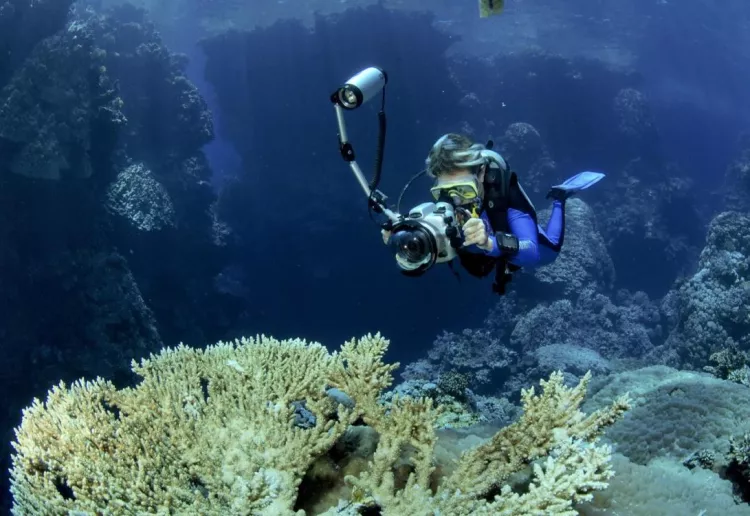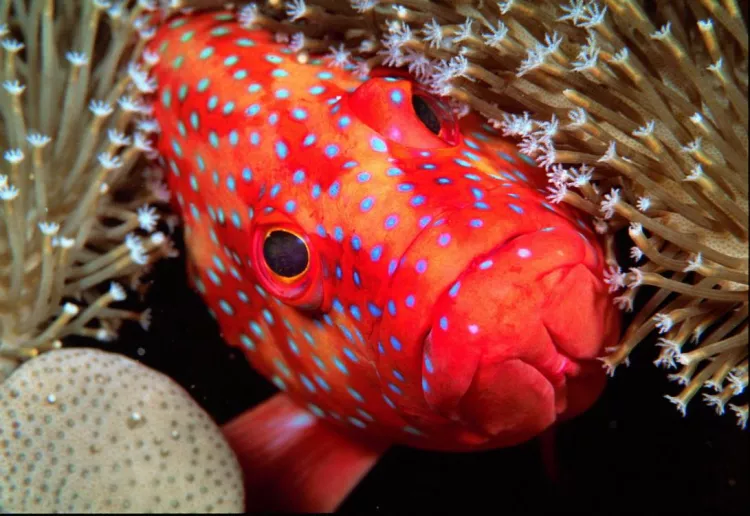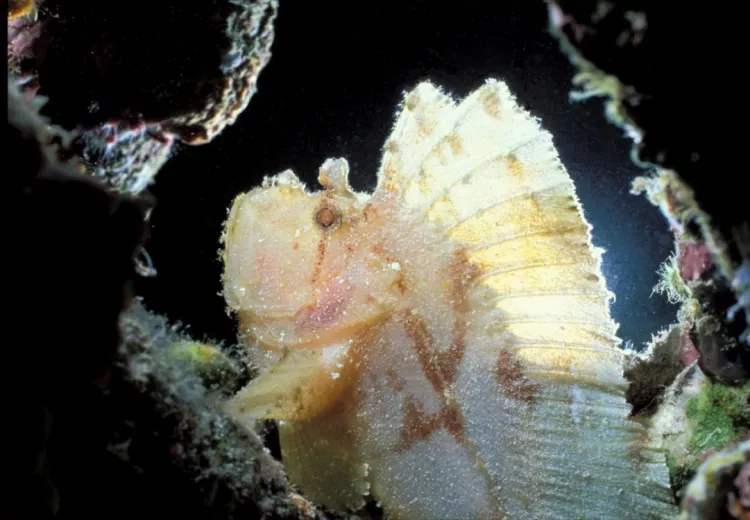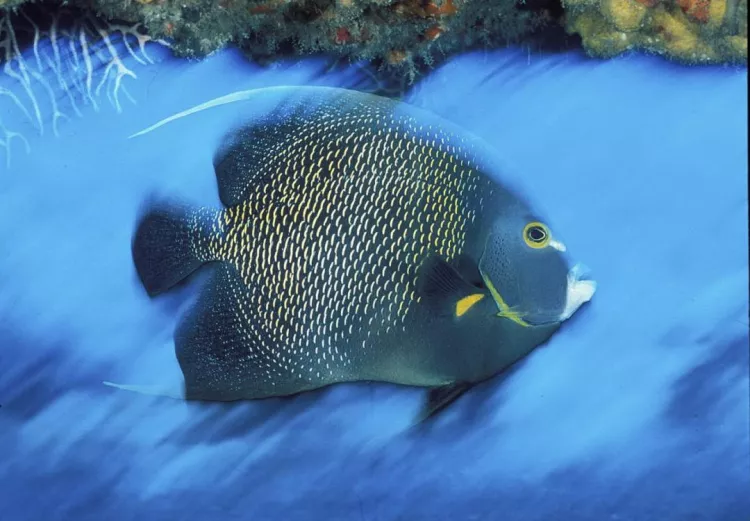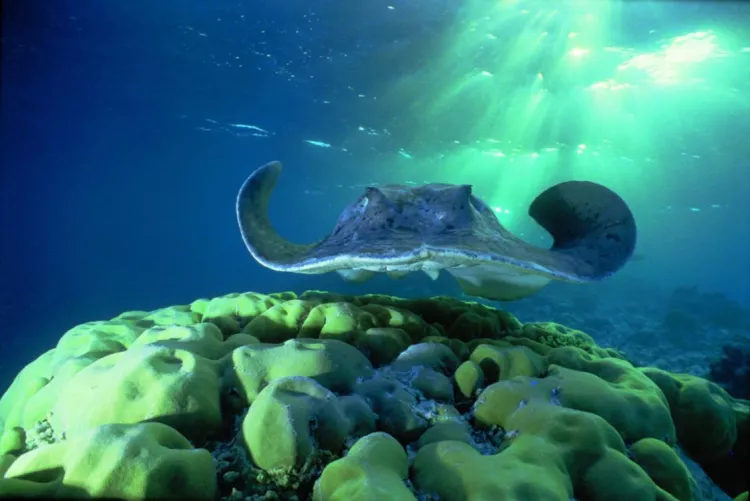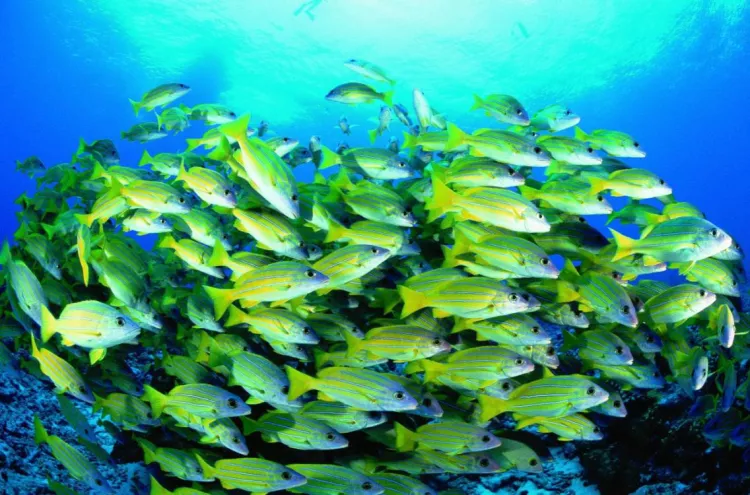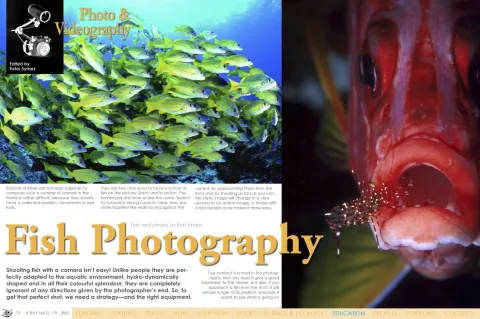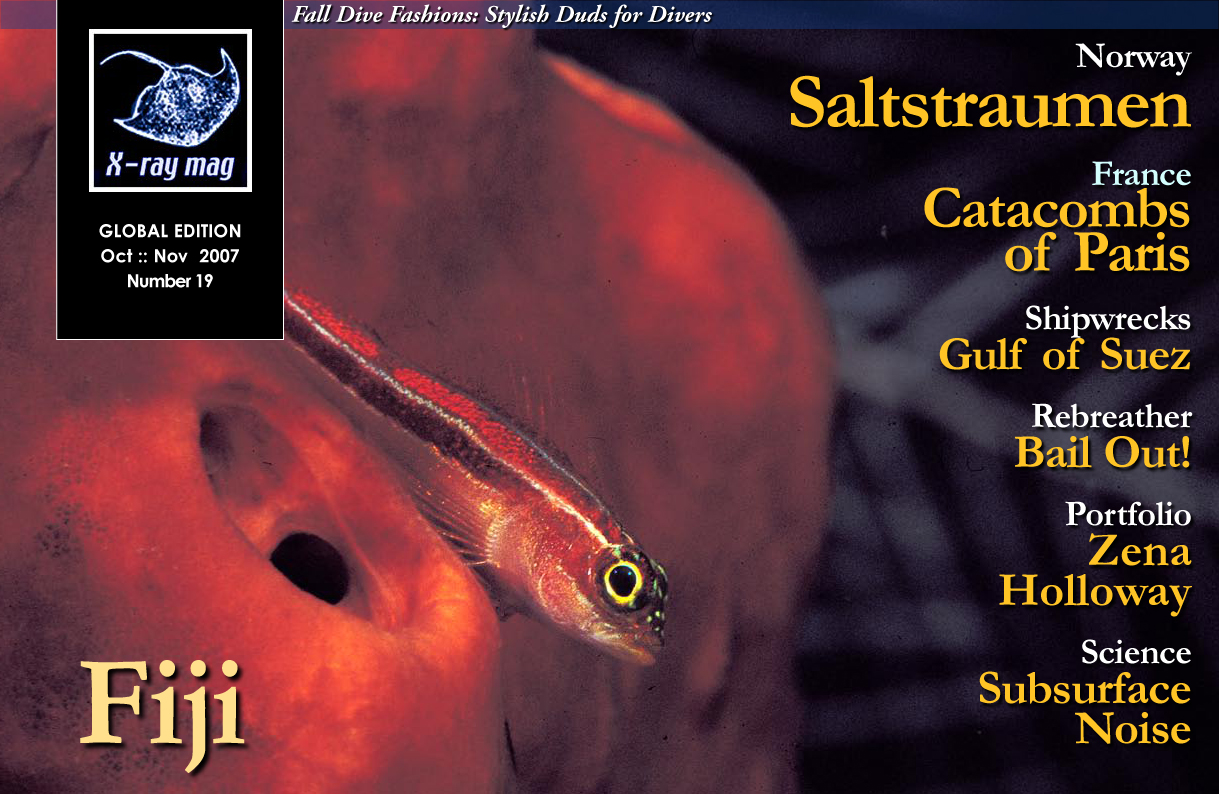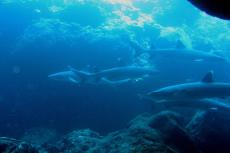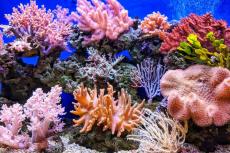Shooting fish with a camera isn’t easy! Unlike people they are perfectly adapted to the aquatic environment, hydro-dynamically shaped and in all their colourful splendour they are completely ignorant of any directions given by the photographer’s end. So to get that perfect shot we need a strategy – and the right equipment.
Caution is a useful behavioural trait for many inhabitants on a tropical reef. It can be a matter of survival. Trying to capture a full format image of sardine with an ultra wide-angle lens is therefore better left to the experts. The creatures you meet underwater also have a comfort zone which you cannot penetrate—you need to keep a certain minimum distance. This is typically in the range of 0.7 to 1m. This makes the 28mm, 35mm and 50mm focal length lenses the best choice for pictures of fish that are 0.2 to 0.5m long fish.
Getting close enough requires a lot of experience unless you are diving in a much visited spot where fish have become accustomed to divers. And speaking of which, I would like to warn against resorting to feeding to attract them; by doing so, you would be changing their natural behaviour, and your newly won scaly friend may soon enough be facing the business end of a spear gun or a hook before too long. That is, if he survives that bad case of indigestion your breakfast scraps gave him.
Apart from the right lens you need the right flash. TTL- metered strobes are ideal for the subject distances usually seen in fish photography, because at a set “working” f-stop, a wide range of distances are covered, and our usually fast moving subjects will be perfectly exposed anywhere within that range.
Bigger fish require a change of strategy, both for lens and lighting. Once you graduate to larger than diver size, say a whale shark, we once more have to resort to the super-wide angle lenses to improve contrast and definition. In this case, we switch the strobe to “manual”, because no TTL-program can correctly compensate for that half of the flash light that just vanishes into the deep blue water instead of being bounced back off a subject.
For any size of scaly subjects, auto focus lenses are an advantage, especially cameras with focus tracking. With focus and lighting being taken care of by technology, the photographer can fully concentrate on fish behaviour and composing the image.
Software
The ground rule for successful fish photography is: shoot first, think later! In real terms, this means your camera has to be set up before you approach your unsuspecting subject. Once within range, there won’t be any time to select programs, focus or set f-stops. And the flash better point in the right direction, too!
With practise and experience, the photographer soon learns what subject distance is right to perfectly frame a fish of a certain size. The camera is then preset for that range, the flash adjusted. The rest is up to the individual’s diving skill, and-as always, when shooting wild animals, a good portion of luck.
Example: At a distance of about 80cm, a 50cm long grouper will be reproduced in full frame using a lens with a picture angle of approximately 45 degrees. The photographer then has to sets the camera and flash to that distance before slowly approaching the subject, without rapid movements. “Bubble fright” can be minimised by exhaling through the mask rather than the regulator. This strategy may seem clumsy and wasteful of precious dive time, but ultimately it is the most successful.
But these are only generalisations. To become an outstanding wildlife photographer, it takes more than stealth and preparation. It also requires an understanding of the animal’s behaviour and its interactions with its environment.
Etiquette in the reef
The more knowledge the photographer brings to the job, the better he or she will be able to adapt to the situation and predict what the fish will do next. All of which will dramatically increase the odds of excelling. But if you’re ploughing through the coral like the proverbial bull in a china shop, even snails will resort to a hasty retreat.
Good diving skills, therefore, are of the essence. You are much more likely to successfully sneak up on some subject when you are neutrally buoyant, breathing controlled and moving slowly.
As with land animals, approach from the front, keeping eye contact at all times. This is less likely to trigger flight reflex as the animal sees what’s happening, and curiosity may get the better of it. If the fish moves, you freeze. In most cases, it will come back if not pursued, and it is always better to remain patient (and motionless) than give chase. Just wait and keep that camera ready.
Please, show some respect. Chasing puffer fish through the reef until they pump up with water is as unacceptable as is poking animals out of their crevasse homes with your snorkel, taming moray eels by feeding so you can touch them, or riding turtles or manta rays.
Instead, join the ranks of the true wildlife photographers, who enjoy the challenge of improving their knowledge and techniques to come up with an even better shot, one that shows natural behaviour in all its natural glory. ■

